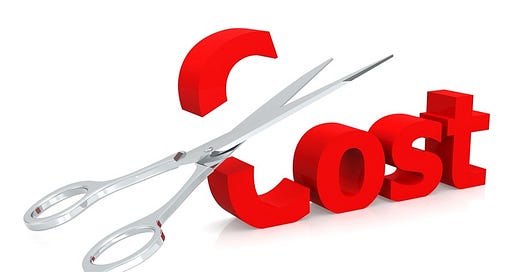Better Cost Cutting in Cannabis
Cutting cost is job 1 at every cannabis company. Unfortunately, many of these hasty, one-off efforts will fail to hit their short & long-term financial targets while producing collateral damage to the firm’s morale and capabilities.
Managers who approach cost reduction strategically with an eye toward ensuring long-term growth and competitiveness will improve the odds of achieving their objectives while minimizing risk.
Rather than approaching cost reduction as a one-time event, firms should see those cost savings activities in the context of strategic priorities and enabling capabilities.
First, align on priorities...
Asking two fundamental questions will help shed light on your true cost picture. First, what are the major short to medium-term product priorities and capabilities that guide your capital and resourcing decisions? Second, do most of your costs and resources line up against these priorities and capabilities?
Typically, there is a poor connection between business-building priorities and spending. This leads to inefficiencies and waste as well as under-investment in vital parts of the enterprise.
...Then focus your cuts
Once a spend-priority misalignment is identified, the key challenge becomes where, what and how to cut, and where to reinvest for growth. Managers need to cut spending in areas that do not support growth and differentiating capabilities and reinvest some of the savings in high-potential, business-building programs.
To get a true read on costs and investment you need to allocate costs against your priorities. This can be accomplished by classifying spending into one of 3 strategic buckets:
1) Differentiating products and capabilities that support growth and your unique value proposition
Areas such as product innovation, analytics and branding could make up 30-50% of a firm’s total cost structure. These will often require more, not less, capital and resources than is currently deployed;
2) Table stakes operations and competencies
These ‘cost-of-entry’ activities include logistics, customer service and compliance. They can often yield savings of 5-15% by area through operational upgrades like strategic procurement.
3) ‘Keep-the-lights-on spending’ that is used to maintain operations.
These cost centres (e.g., HR, facilities management, professional services) frequently can deliver up to 25% reduction in savings through far-reaching cost reduction strategies like outsourcing.
To cut strategically, managers should focus cost-reduction efforts against Bucket 3 areas. If more pruning is needed, the focus should move to non customer-facing Bucket 2 activities. Leaders should be cautious not to mortgage the future by crudely cutting Bucket 1 expenditures (though optimizing is fine).
#costreduction #strategy #operations #efficiency #costsavings


